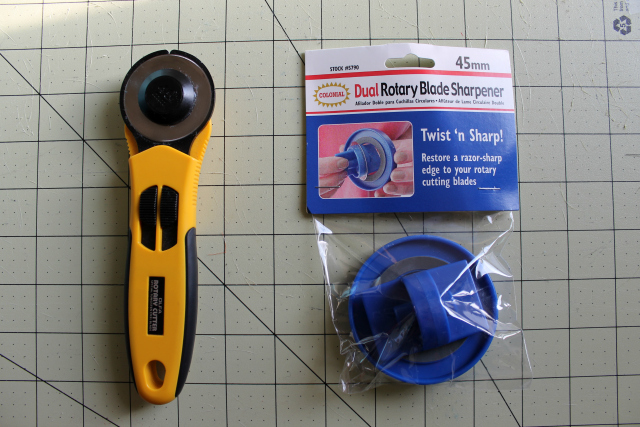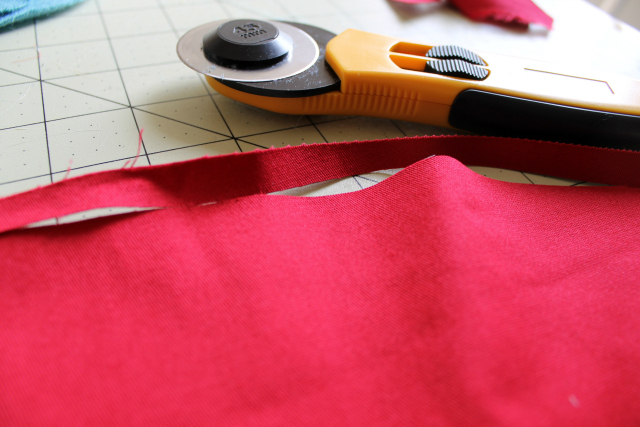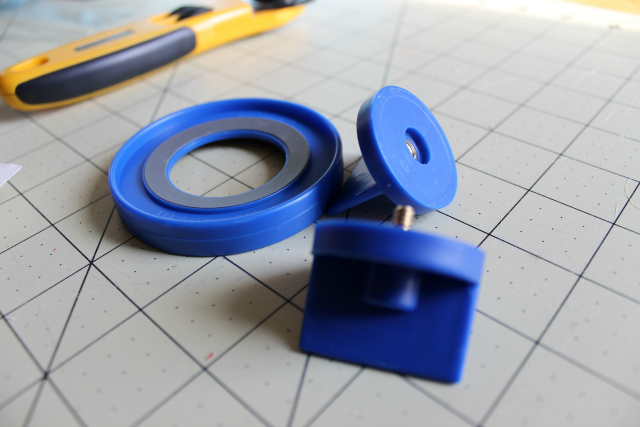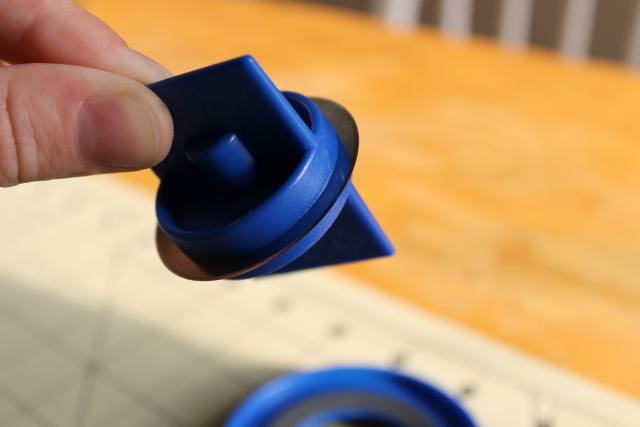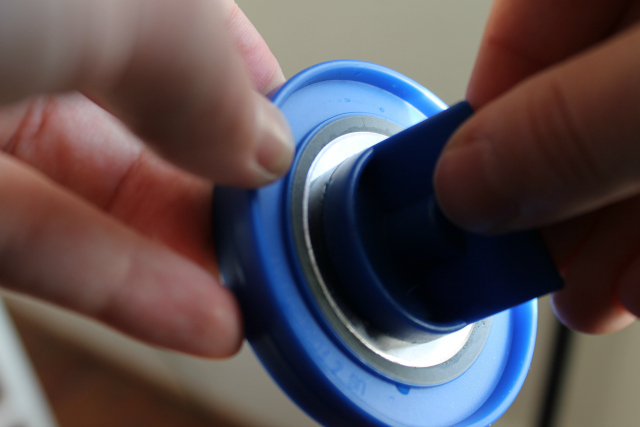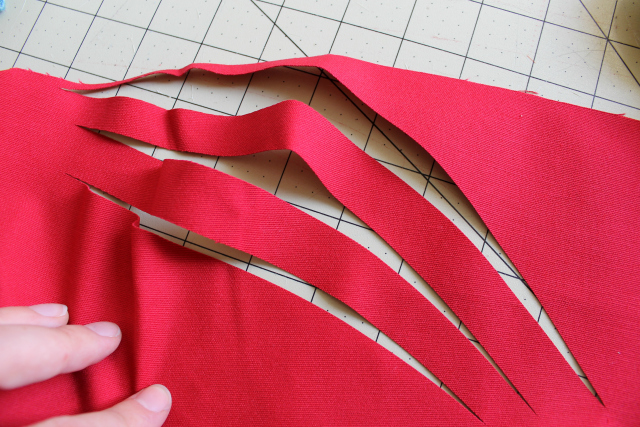It didn't take much convincing to get me to join the rotary cutter gang. Nah, it's not what it sounds like. I'm a nonviolent person (...the kind of person who cries in public while listening to a This American Life podcast episode about teen gang violence). I'm talking about sewing tools, and my obsession with speediness but with a desperate need for accurate cutting. Rotary cutters are the perfect invention.
With the volume of sewing I tend to do (only three-quarters of which lands on the blog), I've been blowing through rotary blades like crazy. I cut a lot of fabric, of course, but I also went through an experimental phase where I was cutting pattern tissue paper with them, too, just to see if it dulled the blades more quicky. FYI: it does. I didn't really mind when my blades got too dull for fabric, because I could then use them to cut out PDF patterns from computer paper. Swear! Only when the blades got so severely knicked up would I resign them to the trash (after putting them back in their original packaging so I wouldn't slice open the trash bags).
Still, I felt like I was spending unnecessary cash on something that can become so easily damaged and quickly disposable. And nothing's more infuriating than a knicked blade that leaves attached threads along the edge of the fabric, or pushes up mountains of fabric as you try to roll along. You know the drill:
This is supposed to be a sustainable hobby, right? Ha. So I finally decided to make another investment to see if I could extend the life of these bad boys. Enter the dual rotary blade sharpener, in this case produced by the Colonial brand. I bought it for about $15 USD with free shipping on Amazon (here).
This one is simple, plastic. Seems like a toy you'd find in your McDonald's Happy Meal bag. You screw these two knobs together to secure the blade, then insert that in the disk and turn. The blade rubs against the ringed sharpener. There's a course side and a fine side to the sharpener, which you use in successive order.
The instructions warn you that it may take more than one try to get it to work on a dull blade. Once it's been warmed up to the sharpening process, it will take to it more easily in the future. Or something. I sharpened as instructed and tried it. Honestly didn't really work. Still dinged up:
I went through the sharpening process again. And it worked! Not an annoying connective thread in sight. This is a new section of fabric:
Whooohoo. I got a lil scrap happy. A blade that was destined for the landfill is back in the game. I say it's worth it... considering $15 is the cost of three Fiskars replacement blades, which for me would go rather quickly. And considering the "Twist 'n Sharp" pun is spot on.
Have you tried a similar gadget, or have a fancier one? Does it work for you? What do you think?
Rotarize in peace and save your dough, my friends. P.S. I hope you enjoyed the primary color overload in this post. ;o)

